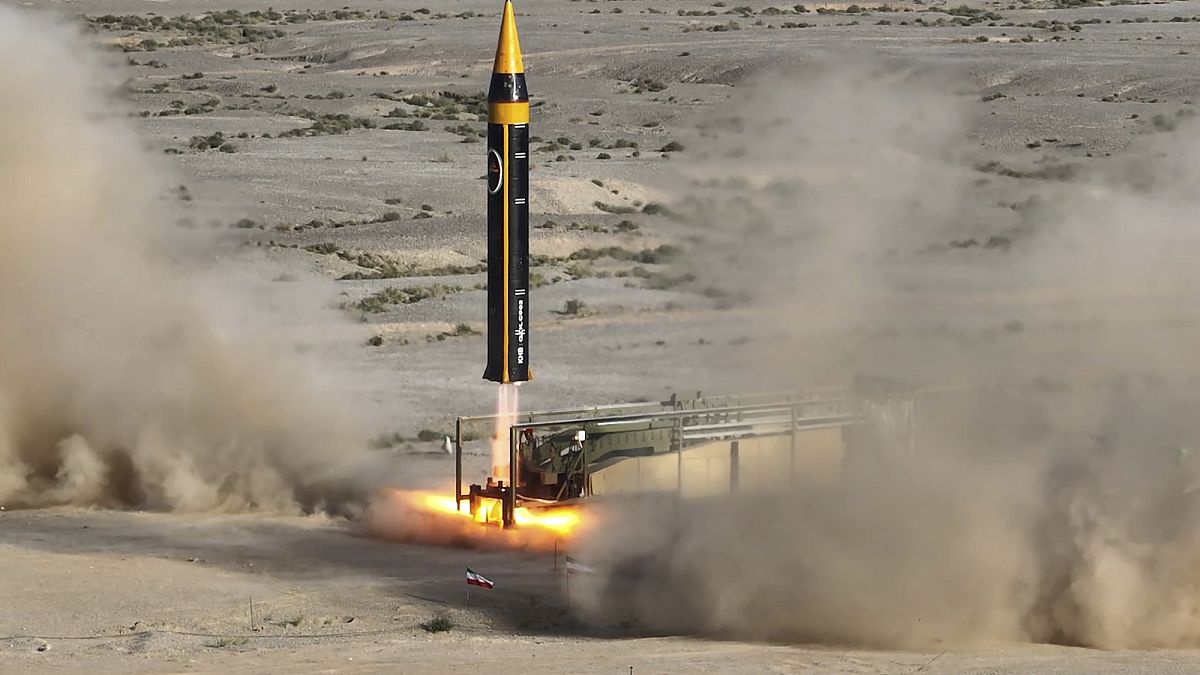Iran has supplied Moscow with its Shahed attack drone to use on the battlefield. Tehran has always denied this, saying the deliveries were made before the start of the war.
The United States has informed allies that it believes Iran has transferred short-range ballistic missiles to Russia to use in its war in Ukraine, according to two people familiar with the matter.
They did not offer any details about how many weapons have been delivered or when the transfers took place, but did confirm the US intelligence findings.
The White House declined to confirm the weapons transfers but reiterated its concerns that Iran is deepening its support of Russia.
The White House has warned Tehran for months against transferring ballistic missiles to Russia.
“Any transfer of Iranian ballistic missiles to Russia would represent a dramatic escalation in Iran’s support for Russia’s war of aggression against Ukraine and lead to the killing of more Ukrainian civilians,” National Security Council spokesman Sean Savett said in a statement.
“This partnership threatens European security and illustrates how Iran’s destabilizing influence reaches beyond the Middle East and around the world.”
Iran has been supplying Russia with weaponry to use on the battlefield in the form of its Shahed attack drone since autumn 2022.
They are regarded as the most significant contribution Tehran has made to Russia’s war effort because of the amount of damage they’re able to inflict.
The US intelligence findings come as Russia claims to have seized another village in the eastern Donetsk region.
The Moscow Times quoted the Russian Defence Ministry as saying Russian forces “have liberated the village of Kalynove”, around 25 kilometres southeast of the Pokrovsk.
Russian troops have been advancing on the key logistics hub for months prompting Ukraine to order the mandatory evacuation of children from the city last month.
Moscow claims to have seized a string of villages in Donetsk, even as it struggles to fight off a major Ukrainian incursion into its Kursk region.
On Saturday, Kursk residents went to the polls to vote in local elections. Russians will elect governors in 25 regions, legislative assembly members in 13 regions, including two in annexed Crimea, and scores of local officials.
“After the explosions, after all the bombings, after drones, we have seen it all, we are not scared of anything anymore. And the most important thing is that people go to vote because we want peace, we want peace and quiet in the Kursk region,” local resident Ekaterina Scherbakova said at a polling station.
The surprise Ukrainian military operation into Kursk, which began on August 6, took even Kyiv’s Western backers by surprise.
President Volodymyr Zelenskyy said last month that the aim of the incursion is to set up a buffer zone inside Russia to prevent it launching further attacks on Ukraine, but he stressed he had no interest in permanently occupying Russian territory.
Speaking at a rare public event in London, the heads of the British and American foreign intelligence agencies said the incursion was a significant achievement that could change the narrative of the war.
“It’s typically audacious and bold on the part of the Ukrainians, to try and change the game in a way. And I think they have, to a degree, changed the narrative around this,” said MI6 chief, Richard Moore.
“The Ukrainians, by going in and taking Kursk, have really brought the war home to ordinary Russians.”
“It’s not only been a boost in Ukrainian morale, it has exposed some of the vulnerabilities of Putin’s Russia and of his military,” said Director of the CIA, William Burns.

